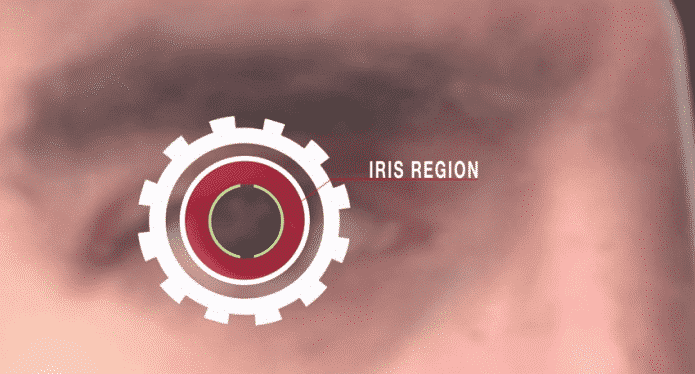Table Of Contents
Long Range Iris Scanner technology helps identify the potentially dangerous criminals and terrorists from a safe distance
Carnegie Mellon’s Long Range Iris Scanner can identify a person even from a distance of 40 feet.
Nowadays, tragic traffic stops are in news, with the Long Island incident that happened earlier this year and the recent shooting incident that happened at Hattiesburg, Mississippi. In both the cases the traffic cop was shot dead during the traffic stop. It has become all the more important for the government to aid the traffic officials with high tech solutions like cameras and other technology which can help them identify the potential dangerous suspects from a safe distance.
Iris scanners have been a part of bio metrics because just like finger prints, every individual has an unique iris. However, the iris scanners used presently would need the person to give their consent for the test and moreover the person would have to come near the machine for scanning their iris which is much more risky if the official has to scan the iris of a potentially dangerous suspect. This is the major drawback of the present day iris scanners.
Researchers at Carnegie Mellon University’s CyLab Biometrics Center have been involved in developing a Long range Iris scanner technology that can identify people located at a distance of 40 feet.
Marois Savvides, a Carnegie Mellon engineering professor, now seems to have found a solution that will help the traffic officials to identify the dangerous suspects within safe limits.
The long range Iris scanner of Savvides is capable of identifying a person when they glance their rear view mirror. For the very first time such a technology has been invented which can scan the Iris of any person from a distance of 40 feet.
The below video is a demonstration of the Long range Iris scanner technology from Marois Savvides :
In an interview with The Atlantic, Savvides said: “Fingerprints, they require you to touch something. Iris, we can capture it at a distance, so we’re making the whole user experience much less intrusive, much more comfortable.” He also added: “There’s no X-marks-the-spot. There’s no place you have to stand. Anywhere between six and 12 meters, it will find you, it will zoom in and capture both irises and full face.”
Bio-metrics has got a wide acceptance because it has been observed criminals easily break the passwords and the security regimes.
Savvides’ long range Iris scanner system can discreetly scan the iris and face of any person.
A spokes person at the Carnegie Mellon says that besides the traffic stops this technology can also find a place at ID verification ports at any location. It could further also replace the laptop’s login systems which is usually found in other bio-metric systems.
The technology also has some disadvantages which the spokes person at the Carnegie Mellon explained via some images. The most potential disadvantage would be that government could scan face and iris of every single person walking on the city block without the consent or knowledge of that person. That means the scanner can use algorithmic methods and identify any person which could include even a disguised political activist.
When Savvides was inquired about the security threat and privacy attacks he said there were other threats which he considered much more serious. He also added: “I always hear the same thing, ‘Oh, well now I can be tracked with bio-metrics’. There’s no need to do that—it’s too expensive.” Further he said: “People are being tracked, their every move, their purchasing, their habits, where they are every day, through credit card transactions, through advantage cards—if someone really wanted to know what you were doing every moment of the day, they don’t need facial recognition or iris recognition to do that. That’s already out there”.
Savvides further also feels that his long range Iris scanner can be of much use in stopping the human trafficking.
Savvides said: “One of the biggest world problem is human and sex trafficking: kids being abducted and trafficked across borders. And if there was such a system at the borders that could identify them, you don’t know how much their own governments want that, because they cannot control how many poor children are being abducted and sold to other countries”.
He added: “That is more often than once a decade, there is some prisoner who may be high-profile. This happens every day, every second, in some country. I would go to sleep at night very peacefully knowing that I saved a 5-year-old child that had been transported across the country.”
As of now Seraphim Global, a Virginia based non profit that works against human trafficking, has given their consent to work with Savvides to achieve their goal.
Iris scanners are already in use across the globe. As per a report from Reuters in 2011, the U.S. police have been using iris scanners to scan the iris of their prisoners and when these prisoners are released they get their iris matched with that of the database.
In India, iris scanners is a basic requirement in order to assign the Unique Identification Number to that citizen.
The United Arab Emirates has set a procedure of scanning the iris of every person who leaves or enters the country, this routine has been followed for a decade now.
Presently the iris scanners have faced a great opposition in U.S. since people would get to know if their irises were scanned.
The research team of Carnegie Mellon University has secured a patent for their invention and Savvides says he is working to make this scanner cheaper and wants it to be easily accessible to the people.

